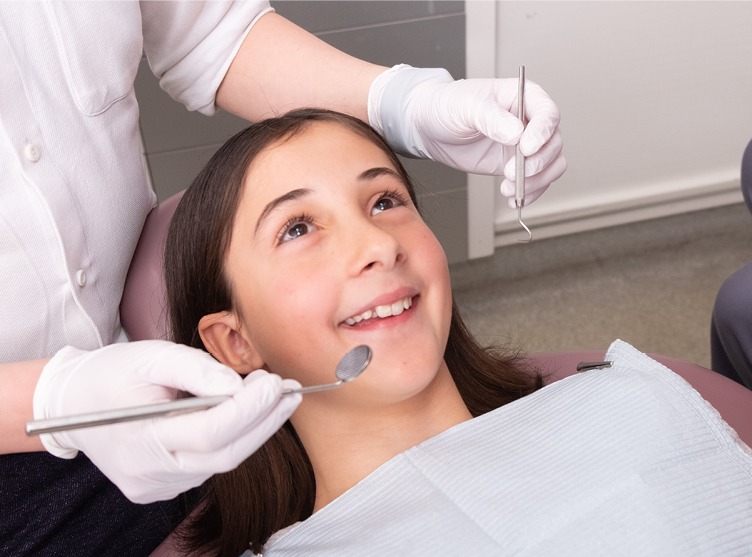The Definitive Guide to Legacy Orthodontics
The Definitive Guide to Legacy Orthodontics
Blog Article
The Main Principles Of Legacy Orthodontics
Table of ContentsLegacy Orthodontics Things To Know Before You Get ThisWhat Does Legacy Orthodontics Do?The Greatest Guide To Legacy OrthodonticsLittle Known Facts About Legacy Orthodontics.Getting My Legacy Orthodontics To Work
In addition, we offer flexible therapy timetables, versatile repayment alternatives and an enjoyable, delightful experience.An orthodontist is a dental professional educated to detect, protect against, and deal with teeth and jaw irregularities. They correct existing problems and are trained to recognize troubles that might establish in the future. Orthodontists collaborate with people of any ages, from kids to grownups. Individuals typically associate an excellent smile with health.
Malocclusion, or misaligned teeth, can lead to oral problems, including dental cavity, gum disease, and hard or painful chewing. Not everybody is birthed with straight teeth. If you have a poor bite or huge areas in between your teeth, you might want to speak with a dental expert specializing in orthodontic treatment.
Legacy Orthodontics Can Be Fun For Anyone
( Image Credit Score: DigitalVision/Getty Images) Orthodontists use fixed and removable dental tools, like braces, retainers, and bands, to transform the setting of teeth in your mouth. Orthodontic therapy is for dental irregularities, consisting of: Crooked teethBite troubles, like an overbite or an underbiteCrowded teeth or teeth that are also much apartJaw misalignmentThe goal of orthodontic treatment is to boost your bite.
While you might believe of orthodontists as generally for children or young adults that require braces, they can deal with dental problems at any age. Orthodontists go to college, oral college, and orthodontic college.
, but not all dental professionals are orthodontists. They focus on 2 areas: How to correctly and safely move teeth How to effectively lead growth in the teeth, jaw, and faceOnce an orthodontist has actually finished training, they have the choice to end up being board certified.
What Does Legacy Orthodontics Do?
Malocclusion leads to tooth congestion, an irregular jaw, or uneven bite patterns. Malocclusion is generally treated with: Your orthodontist attaches metal, ceramic, or plastic square bonds to your teeth.
If you have just minor malocclusion, you might be able to utilize clear dental braces, called aligners, as opposed to conventional dental braces (https://letterboxd.com/legacyortho/). Some people need a headgear to assist relocate teeth right into line with stress from outside the mouth. After braces or aligners, you'll need to wear a retainer. A retainer is a custom-made gadget that keeps your teeth in area.
They're most typically used on youngsters. They can develop added area in the mouth without needing to draw teeth. If you have a serious underbite or overbite, you might need orthognathic surgical treatment (also called orthodontic surgery) to lengthen or shorten your jaw. Orthodontists utilize cords, medical screws, or plates to support your jaw bone.
You might need to see an orthodontist if you have: Crowding or not sufficient room for all of your teethOverbite, when your top teeth come your bottom teethUnderbite, when your bottom teeth are also far forwardSpacing or problems with gapsCrossbite, which is when your upper teeth fit behind your base teeth when your mouth is closedOpen bite or an upright gap in between your front bottom and upper teethMisplaced midline, when the facility of your base and upper teeth do not align Remedying an oral malocclusion can: Make biting, eating, and talking easierImprove the symmetry of our face and your total appearanceEase discomfort from temporomandibular joint conditionsSeparate your teeth and make them easier to cleanse, assisting avoid dental cavity or dental caries It's usually a dentist who first notifications misaligned teeth throughout a routine exam.
A Biased View of Legacy Orthodontics

During your first orthodontic assessment, you'll likely have: An oral examPhotos taken of your face and smileDental X-raysPanoramic (360 level) X-rays of your face and headImpressions to create molds of your teethThese examinations will aid your orthodontist understand how to continue with your therapy. orthodontist. An orthodontist is a dental practitioner who's had training to treat your teeth and jaw
An orthodontist is focused on your bite, so something like a damaged tooth would certainly be taken care of by a dental practitioner. Orthodontists are concentrated on your bite, or the method your teeth fit with each other, and the straightness of your teeth.
Ever questioned how stars constantly appear to have flawlessly straightened teeth? The answer commonly lies in the experienced hands of an orthodontist. However what precisely does an orthodontist do? Orthodontists are oral professionals that focus on correcting abnormalities in the teeth and jaws. Their competence surpasses just creating a lovely smile; it reaches boosting your general dental health and function.
The Buzz on Legacy Orthodontics

, orthodontists have a diverse toolkit at their disposal. These tried-and-true dental braces utilize a system of brackets bound to the teeth and connected by cords.
Clear aligners, like Invisalign, are a popular alternative for patients straight from the source seeking a more discreet therapy choice. These removable trays are customized to gradually change the teeth's placement. Headwear may be utilized along with dental braces or aligners to apply additional targeted forces, specifically for remedying jaw inconsistencies. In cases of slim jaws, palatal expanders can be made use of to develop room for appropriate tooth alignment.
Report this page